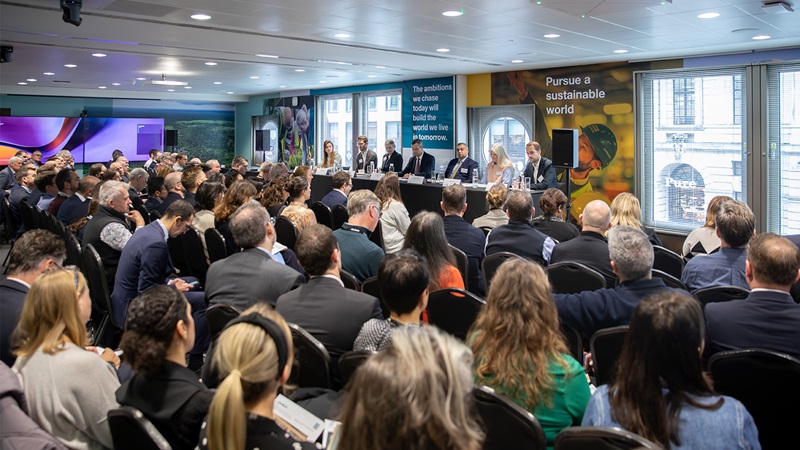Collaboration is at the heart of creating a circular construction industry
Following the publication of our report Closing the Circle: Making London the Circular Construction Capital of the World, we hosted a panel event to discuss the actions the industry needs to take to transition from a linear model to a circular economy.
Circularity – or the creation of a circular economy – is a necessary part of how our industry must respond to the climate challenge. Through the principles of ‘reduce, reuse and recycle’, the construction and development industries must address our use of virgin construction materials.
The panel's insightful discussion addressed barriers to achieving a circular construction industry and how these can be overcome. We delved into everything from policy to behaviour change but, underlying all of this, was an agreement that it will take collective action from across the industry to create the change we need.
Here are some of the key areas to drive circularity in the built environment.
Think differently and learn together
Fundamentally, moving from a linear to a circular way of thinking in construction will require a change in how we approach projects. We need to move away from a siloed, package-by-package view to a more holistic systems approach and avoid using raw materials in the first place.
This will also demand a more collaborative way of working. It will require contractors, supply chain, investors, developers and policymakers all working together, sharing knowledge, and fairly allocating risk. The earlier contractors and the supply chain can be engaged on a project, the greater the impact that can be made.
We need to be bolder in our approach, willing to take risks, and looking to trial new approaches before adopting them at a wider industry scale.
Connecting the dots: policy, planning and carbon targets
The Greater London Authority and the City of London have been leading the rest of the country when it comes to planning policy, with the GLA’s London Plan and the City’s Carbon Options Guidance. This has driven a focus on reducing embodied carbon in the UK’s capital and, with changing regulations, creates an environment where investment in circularity options is encouraged.
Another positive development has been the creation of a standardised Net Zero Building Standard by the UK Green Building Standard. Previously, organisations had different ways of measuring carbon in a building, but the Net Zero Building Standard creates one consistent definition.
However, there are a few policy areas which currently act as a disincentive. For example, the current VAT regime in the UK means demolition and new build is encouraged over retrofit. If a developer chooses to retrofit a building, they are effectively paying a premium through VAT. The panel discussed the need to work with industry bodies to continue to campaign to change this.
Materials and metrics
One of the core themes of the discussion was the supply and demand of re-used materials in the construction supply chain.
Panellists debated the importance of providing assurance on re-used products and the challenge to obtain suitable warranties together with a unified accreditation system to provide quality assurance.
There was a call for the creation of an online marketplace for materials ‘material banks’, where developers can buy and sell materials salvaged from previous projects. This would help address some of the concerns about a lack of supply in the circularity material market, helping to connect buyers and sellers.
These material banks need to be an industry wide resource ready to procure to benefit programme and cost.
Data, technology and measurements
Good quality data is at the heart of any well-functioning market and circularity is no different. This is also fundamental for institutional investors who need to demonstrate the ESG credentials of their investments.
One of the biggest challenges is that there are many different platforms on the market and it’s hard to know which tech yields the best results. The panel discussed how they have gone about choosing various software they use, with one of the speakers saying they decided to develop their own.
What’s clear is that there is currently no silver bullet, but to move this forward we need to introduce consistency in how we measure and report on carbon alongside credible data to back up claims. Greater standardisation across the built environment will create certainty in the market.









